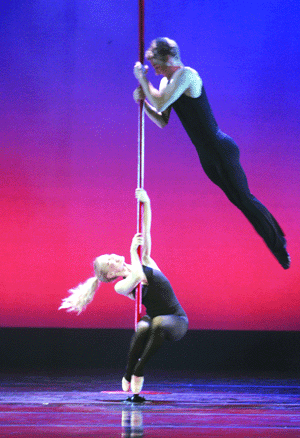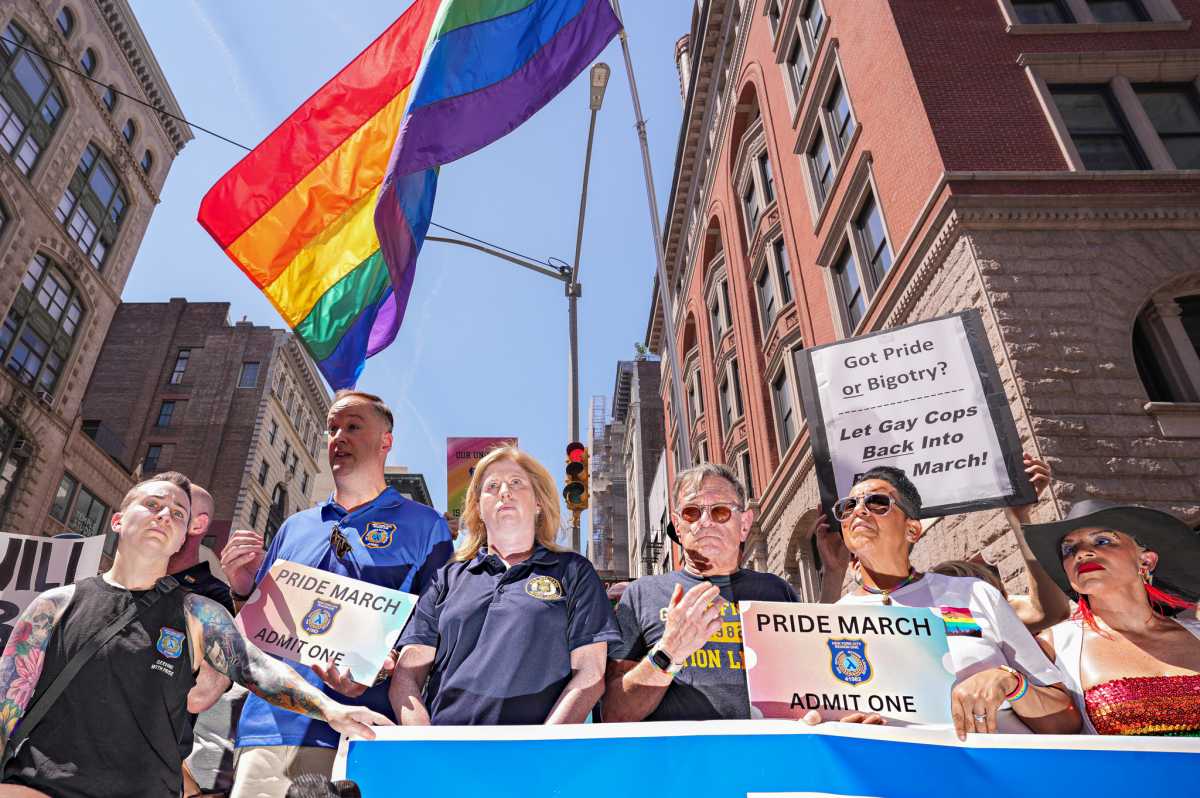Smuin gives the people what they know
In several decades of dancing, choreographing, and directing other dance companies as well as his own, Michael Smuin has perfected the art of entertainment. Down to his musical selection and costumery, the eye is never idle watching his work.
At least that was the case on the opening night of Smuin Ballet’s week long run at the Joyce Theater. Presenting three pieces, two of which were New York premieres, Smuin’s 16-member company dazzled its audience in a show more about entertainment and romance rather than hip, sophisticated dance.
The show began with “Bluegrass/Slyde,” a medley of pieces danced to Edgar Meyer’s bluegrass music. The set by James Beaumont was an aluminum grid with a skeletal structure resembling a construction site. It held three vertical poles with spinning circular disks at their bases, which the dancers often utilized. The cheery and upbeat tone set by the music mirrored the movement as members of the company hoisted themselves onto the poles in spurts of energy, bearing exaggerated grins and displaying their athleticism as they spun upside down or on each other. They even managed to squeeze in a kiss.
Smuin incorporated tap, pointe, and jazz into the 40-minute piece, blending seductive hip swiveling with delicate fouettes and attitudes. There were no stars in the piece as all the dancers flew on and off the stage in a blur of shiny black leotards and jazz pants, a look the females of the company completed with bouncy, curly pigtails. Smuin assigned stereotypical gender roles to his dancers, as the men marched across the stage in packs while the women spun erotically on the poles.
The other New York premiere of the night, “Symphony of Psalms,” differed dramatically from the first piece. Set to a heavy Stravinsky chorale, the ballerinas seemed to float as the men gently lifted them effortlessly. While the elaborate set disappeared, Smuin compensated with sky blue costumes, swirly, sparkly, and reminiscent of ice skating attire. This was no coincidence—the costume designer, Ann Beck, has also fashioned dresses for skating stars like Tara Lipinski, Kristi Yamaguchi, and Katarina Witt. Aside from the glittery distraction, the focus of the piece remained on the dancers themselves. Vanessa Thiessen’s performance was remarkable; filling every note of the music, she extended her legs into impressive arabesques with a stony face of concentration and seriousness, a flashy smile thankfully missing.
The audience favorite, “Fly Me to the Moon,” a series of nine dances set to Frank Sinatra classics, concluded the program. A sense of old fashioned romance and nostalgia in the pieces often roused the audience, comprised primarily of people old enough to recall watching Sinatra in the ‘40s, to sing or clap along. The ballerinas, in long tulle dresses in various candy colors matched the male dancers, who wore satin vests and ties, fedoras, and gray dress pants,
In entirely lyrically driven choreography, couples such as Celia Fushille-Burke and James Strong in “Moonlight Serenade” generated chemistry through their longing glances. Her red lips and sparkling earrings evoked an older glamour as she paused while Strong sensually ran his hands down her torso. In “That’s Life,” Shannon Hulbert used his fedora and trench coat as props, throwing and twirling them, as a suave and confident male of the era would have done. And to no one’s surprise, “New York, New York” closed the program—but then again, never in the performance was surprise a part of Smuin’s choreographic vision.
gaycitynews.com

































